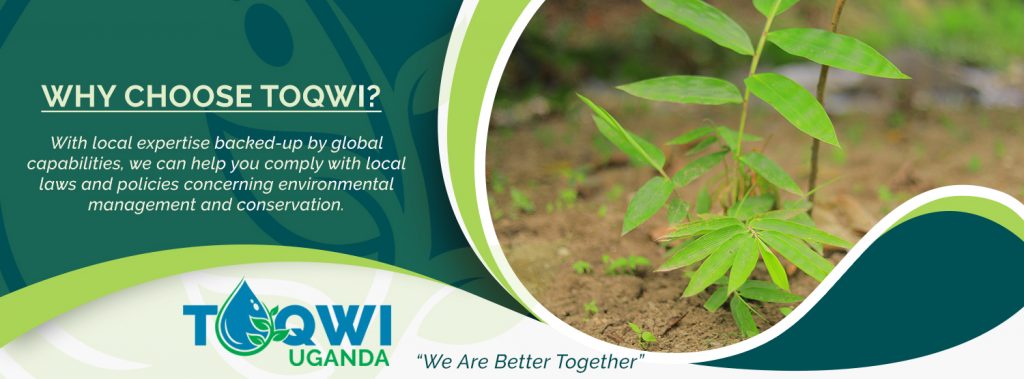Ecosystem Restoration Service
We understand ecosystem restoration is all about re-establishing ecological function to damaged or degraded environments through design, management, and monitoring. Our diverse team is here to serve as a trusted technical advisor in helping achieve your restoration goal—at nearly any scale or location. The perfect synthesis of understanding the local environment, deep bench of in-house multi-disciplinary staff, and constant focus on innovation and safety is what drives our success and ensures that projects are completed accurately, quickly and within budget. .
Degraded, damaged, or destroyed ecosystems could be anything from mountains after a landslide, wetlands destroyed due to landfills and conversion, water-bodies polluted due to chemical discharge, sewage disposal, and agricultural run-off to streams impacted by urbanization. Our ecosystem restoration projects use nature-based solutions to recover those areas, improving their natural processes and creating opportunities for resilient planning.
Nature-based solutions (NbS)
NbS work with and enhance nature so as to help people adapt to change and disasters. They involve the protection, restoration or management of natural and semi-natural ecosystems or the creation of novel ecosystems and are designed and implemented with the full engagement and consent of local communities. Examples include:
Watershed Restoration
Watershed restoration refers to an integrated approach encompassing conservation, regeneration and the judicious use of all natural resources (land, water, flora, fauna and human development) within the watershed. Conservation of soil moisture for rain-fed agriculture; aquifer recharge to augment groundwater irrigation; capture of surface runoff water in small ponds; construction of check dams for erosion control in the upper reaches of watershed; sustainable usage of resources; and even distribution of ecosystem service benefits for both upstream and downstream populations, are some of the measures for integrated watershed management. Watershed management is an integral part while conducting restoration of water resources.
Climate Smart Agriculture (CSA)
CSA is agriculture that sustainably increases productivity, enhances resilience (adaptation), reduces/removes GHGs (mitigation) where possible, and enhances achievement of national food security and development goals. It aims to simultaneously achieve three outcomes:
Increased productivity: Produce more and better food to improve nutrition security and boost incomes, especially of 75 percent of the world’s poor who live in rural areas and mainly rely on agriculture for their livelihoods.
Enhanced resilience: Reduce vulnerability to drought, pests, diseases and other climate-related risks and shocks; and improve capacity to adapt and grow in the face of longer-term stresses like shortened seasons and erratic weather patterns.
Reduced emissions: Pursue lower emissions for each calorie or kilo of food produced, avoid deforestation from agriculture and identify ways to absorb carbon out of the atmosphere.
Conservation Agriculture
Conservation Agriculture (CA) is a farming system that can prevent losses of arable land while regenerating degraded lands. It promotes maintenance of a permanent soil cover, minimum soil disturbance, and diversification of plant species. It helps farmers to maintain and boost yields and increase profits, while reversing land degradation, protecting the environment and responding to growing challenges of climate change.
Agroforestry
Agroforestry is the intentional integration of trees and shrubs into crop and animal farming systems to create environmental, economic, and social benefits. Interactions between trees and other components of agriculture may be important at a range of scales: in fields (where trees and crops are grown together), on farms (where trees may provide fodder for livestock, fuel, food, shelter or income from products including timber) and landscapes (where agricultural and forest land uses combine in determining the provision of ecosystem services).
Forest Gardening
Forest gardens are a popular form of agroforestry. A forest garden is a designed agronomic system based on trees, shrubs and perennial plants. These are mixed in such a way as to mimic the structure of a natural forest – the most stable and sustainable type of ecosystem in this climate. The crops which are produced will often include fruits, nuts, edible leaves, spices, medicinal plant products, poles, fibers for tying, basketry materials, honey, fuelwood, fodder, mulches, game, sap products. Forest gardens also create a natural habitat for animals and insects and plants with greater pest resilience, producing continual food without annual tilling, pesticides, fertilizers or other high inputs of chemicals or energy.
Farmer Managed Natural Regeneration (FMNR)
FMNR is based on encouraging the systematic re-growth of existing trees or self-sown seeds. It can be used wherever there are living tree stumps with the ability to coppice (re-sprout) or seeds in the soil that can germinate. The regrown trees and shrubs – integrated into crops and grazing pastures – help restore soil structure and fertility, inhibit erosion and soil moisture evaporation, rehabilitate springs and the water table, and increase biodiversity. Some tree species also impart nutrients such as nitrogen into the soil.
Assisted Natural Regeneration (ANR)
ANR is a blend of active planting and passive restoration, where local people intervene to help trees and native vegetation naturally recover by eliminating barriers and threats to their growth, leaning on their knowledge of the land and on ancestral traditions. The method aims to accelerate, rather than replace, natural successional processes by removing or reducing barriers to natural regeneration such as soil degradation, competition with weedy species, and recurring disturbances (e.g. fire, grazing and wood harvesting).
Enrichment Planting
Enrichment planting is the introduction of valuable species to degraded forests or secondary forests without the elimination of valuable species already present. It has been suggested as a technique for restoration of overexploited and secondary forests as it can increase total tree volume and the economic value of forests
Reforestation and Afforestation
Reforestation is the process of planting trees in a forest where the number of trees has been decreasing while Afforestation is when new trees are planted or seeds are sown in an area where there were no trees before, creating a new forest. They are two of the leading nature-based solutions for tackling the effects of climate change. For commercial foresters and landowners, these two practices are essential to ensuring they can grow wood for wood products and continuously meet demand in a sustainable way

